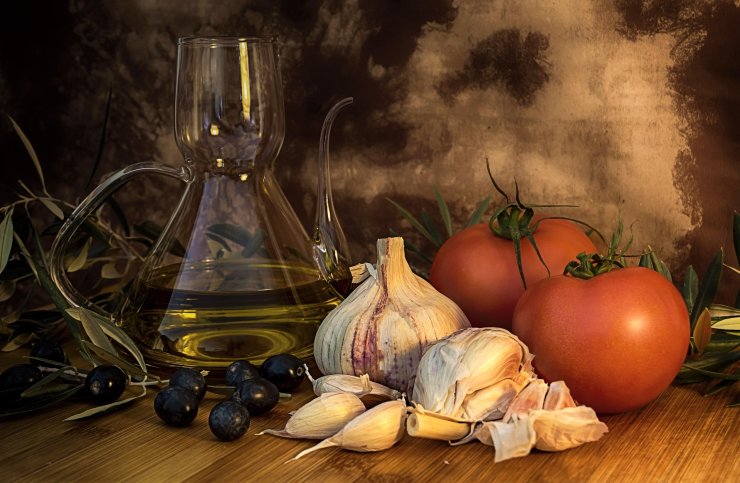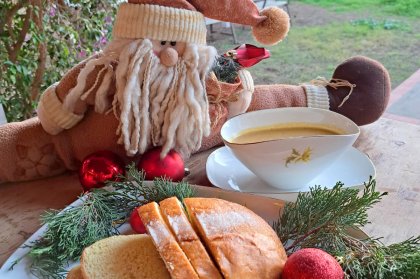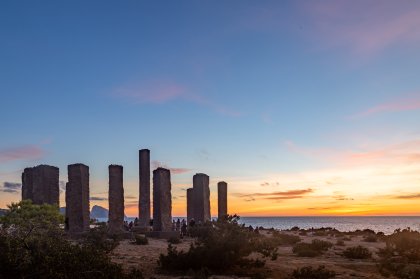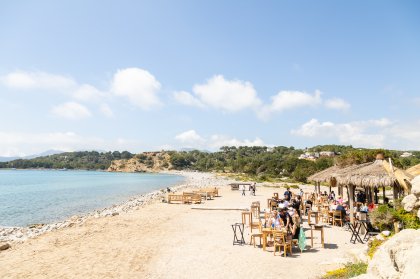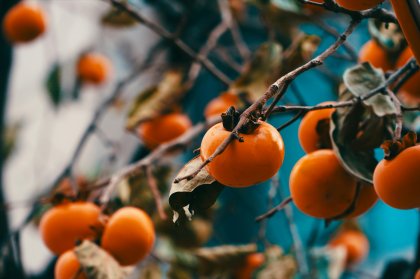To remind you of your Ibiza holidays, today we bring you a classic Spanish seafood paella recipe prepared by Julián González, who has been head chef at many leading restaurants on Ibiza. He can now be found at Hoyo 19, at Golf Ibiza.
Foodie purists would make this dish using a special pan called a paellera and both Julián and any Spaniard would agree. If not available, use the widest frying pan you have as the rice should be cooked in a thin layer for the best taste. Use a wok if you don't have such a pan to hand; whilst the results won't be as good, you'll still get all the delicious flavours.
Julián's seafood paella

The most important thing about making a paella is having a good fish stock, known as a fumét, to give flavour to the rice. Cooking a traditional paella is a three-stage process in this order: make the stock; fry the vegetables and seafood, the sofrito; then cook the rice. Let's begin.
Stage one: make the stock
Heat a tablespoon of virgin olive oil, or oil mix in a pan and fry the prawn heads. Add two litres of water, the monkfish and the bones from the grouper and bring it all to a boil. Make sure you remove the scum that rises to the top of the pan before it reaches the boil. Leave the stock to simmer at a good pace for 30 minutes, then sieve into a jug. Top up to a litre if a lot of liquid has evaporated, and keep it to one side.
Stage two: make the sofrito
Warm the paellera, large frying pan or wok on medium heat, add the fresh or canned tomato, chopped cuttlefish, chopped green pepper, chopped garlic, a teaspoon of salt and three to four tablespoons of the oil. Cook for 10 to 15 minutes, stirring occasionally to avoid burning.
Top tip: allow the the tomato to caramelise to add more flavour to your paella.
Stage three: the rice
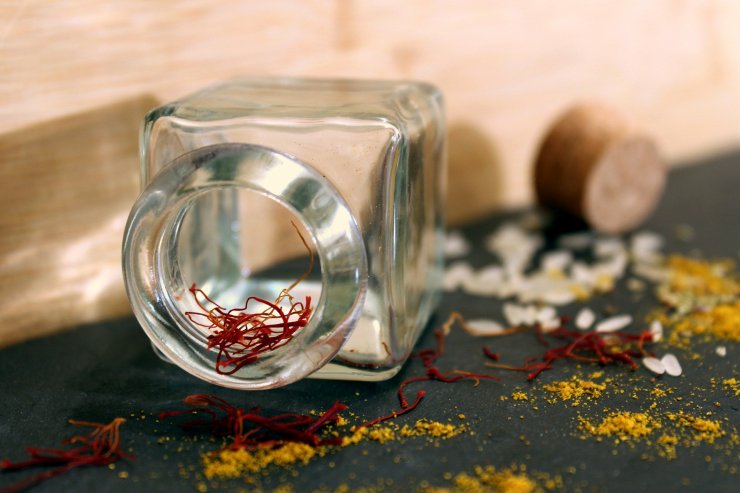
Keep the pan on a medium heat and add in the rice, saffron (if available) and colouring. Then fry it for a short while to seal in the flavour. Add one litre of the strained stock and stir in, adding in more as needed if the liquid boils off quickly. If you have any stock left, freeze for another day.
You will need to cook everything, stirring as little as possible, for around 20 minutes, depending on the rice you use, adjusting the flame if it starts to stick to the bottom.
Half way through, taste the paella to see if it's salted enough, adding more if needed and throw in the monkfish, shrimp and crab legs (or the frozen seafood). Adding the fish and seafood at this stage stops them being overcooked.
Once done, remove from the heat, stir in the chopped parsley, and let it stand for five minutes before serving.
Buen provecho! (Bon appetit in Spanish).
Ingredients
Serves four people
- 200 grams of plum tomatoes diced or a 400 gram can, draining off the juices
- 2 cloves of garlic, finely chopped
- Half a green pepper, chopped
- A few sprig of parsley, chopped
- 500 grams of paella (“bomba” is best) or risotto rice
- 1 piece of cuttlefish, skin on to provide more flavour
- 8 mussels
- 8 whole prawns
- 4 crab legs
- 300 grams of monkfish, chopped and bones removed for the stock
- Salt
- 5 strands of saffron
- 1 teaspoon of paella colouring for the characteristic yellow paella colour - optional
- Virgin olive oil (not Extra Virgin. If not available substitute a mix of two thirds vegetable oil, one third Extra Virgin olive oil for a similar flavour)
- 2 litres of water
Note: if you find you can't get fresh fish and seafood easily, you can substitute a 400 gram bag of mixed seafood and use chicken stock instead of the fish one. Paella colouring gives the paella its characteristic yellow colour, though the saffron should also do the trick, though it won't be as vibrant a colour.
Alternatively, you can book Julián by calling +34 607 22 18 39 to have him prepare a delicious paella of your choice cooked by your private chef at your holiday villa or home.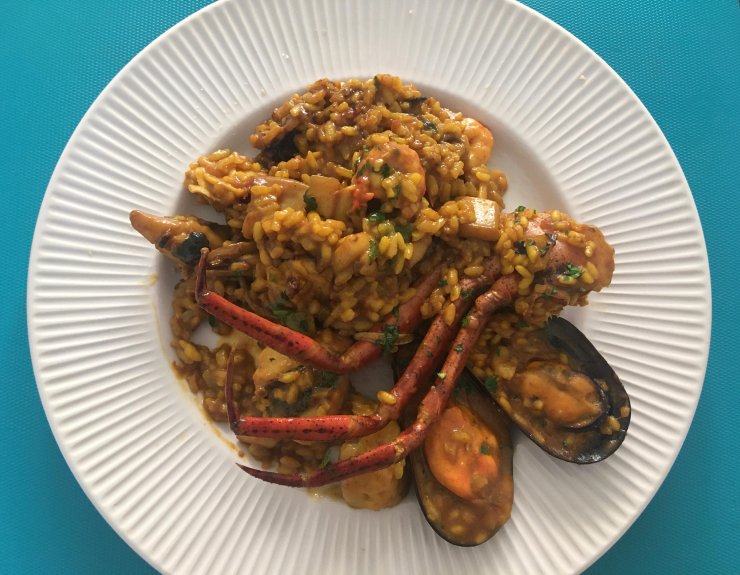
Making a Spanish tortilla is easy. Let Lluc show you how in our video.
If you want to get a low-down on the mains' dishes that Ibizan's love, see our article.

